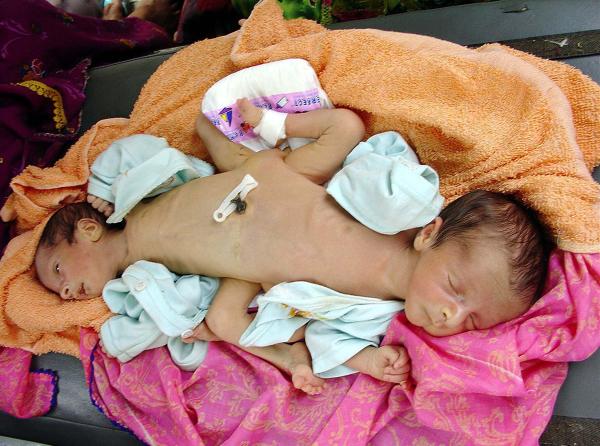Last week, the global news outlets reported a case of a baby boy born in India with two penises and four legs. The patient was successfully operated on to remove the anomalous duplications (aka polymelia, extra limbs) and is doing well by all accounts.
Fortunately, these types of abnormal or accessory appendages are a rarity. But, they occur more often than you would imagine. Fetal and embryologic development is a dynamic process with cells migrating in multiple directions along innumerable planes to form organ systems, in particular, in early pregnancy. As a result, varying influences can alter their trajectory albeit of chromosomal, genetic or environmental (e.g. medications, infections, toxic exposures) origin, for instance.
Many, many years ago pregnant women were routinely prescribed thalidomide for morning sickness which proved to be a substantial teratogen (aka any substance or agent that interferes with normal fetal development). Babies were born with absent portions of limbs or extreme shortening of them, phocomelia. Other deformities were observed and the drug was discontinued in this population.
Often there is no specific or known inciting event that triggers a congenital anomaly (aka birth defect). In this instance, the press release from Bangalore’s Narayana Health City attributes the malformation to a “parasitic twin” condition. Conjoined twins develop in a number of various ways sometimes being attached at the head, other times via the chest and so forth… There are situations where one degenerates, stops maturing and becomes parasitic— traditionally under developing, leaving behind vestiges that usually do not function as a properly developed appendage would.
“Parasitic twins” can involve one twin ostensibly vanishing into another where what remains is extra limbs. This is dipygus when legs and pelvic duplications— like extra genitalia— arise. Fetus in Fetu is a type where the abnormal parasitic twin gets consumed inside of the normally developing twin (who serves as the host).
For obvious reasons, everything is not known about these aberrant paths. Shifting gears, there are conditions that prompt duplications in the uterine, vaginal and cervical realms as well. The Mullerian Duct reflects the precursor structures that embryologically morph to become the reproductive tract. Mullerian Duct Anomalies can run in families and produce a double vagina, double uterus with dual cervices, aka Uterine Didelphys.
Such atypical pelvic organs can result in several varieties (e.g. double uterus, single vagina or double everything). These are often diagnosed upon first menstruation or when issues with fertility come into play. With the former, one vaginal canal might end in a blind pouch so blood will accumulate with an inability to flow out of the body and great discomfort will arise. Upon investigation and proper medical evaluation, the discovery will be made. The latter reality might also lead to determining such an underlying cause.
Those with Mullerian Duct Anomalies often successfully conceive. The anatomy is important to verify. If there is more than one cervix, for example, then each should be swabbed during routine gynecologic exams to ensure neither demonstrates cell change, infection or cervical cancer. These irregularities also may be accompanied by a solitary kidney which is vital to elucidate. When an individual has only one kidney, the goal becomes greater to protect it from harm so avoidance of contact sports and monitoring of function become key ingredients to sufficient surveillance.
There are more situations—outside the scope of this article— where duplications in the genitourinary tract take place as well as other redundancies including but not limited to extra digits or supernumerary nipples and teeth. If this topic intrigues you, then review Ovarian Tumors with Brain Tissue, Teeth or Hair (Not Unheard Of).
Thankfully, the vast majority of babies grow and evolve in a more expected and similar pattern. While on many occasions the divergent issue or complexity alone can make a person that much more special, we are lucky that modern medical advances afford us the ability to intervene as an option —often substantially—when challenging conditions present themselves.
NOTE(S):
The photo accompanying this article represents conjoined twins. It is not the case of the baby boy recently born in India --determined by the hospital to be a "parasitic twin." That case can be reviewed by clicking on the blue links at the beginning of the article.




